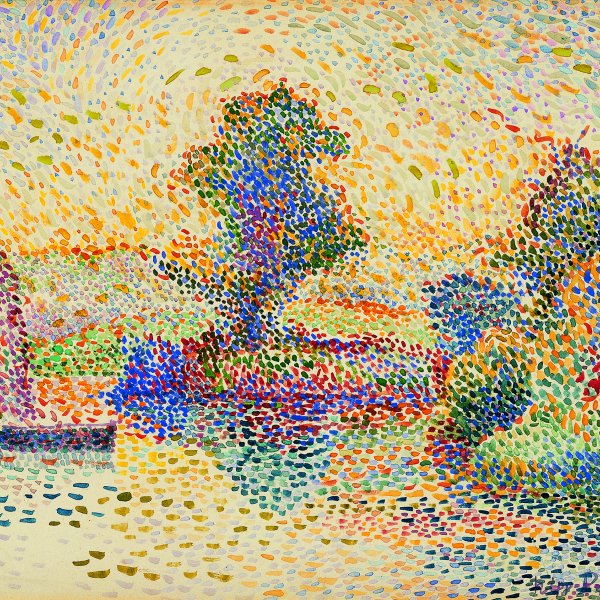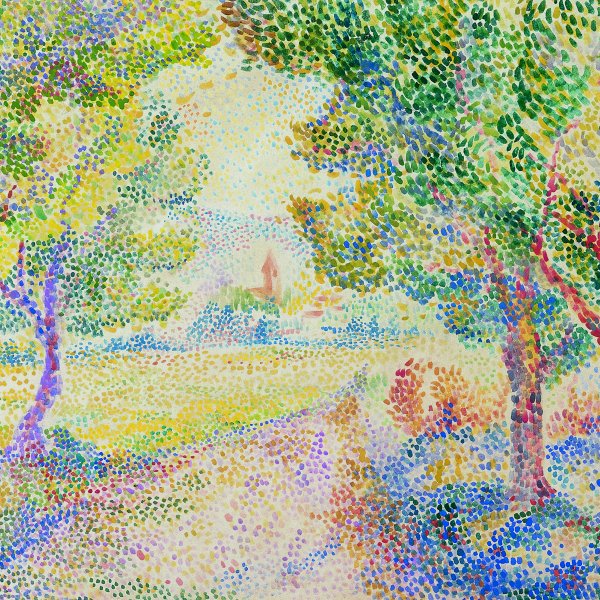Hippolyte Petitjean
Hippolyte Petitjean was born in Mâcon on 11 September 1854 into a family of modest means. Very soon he became an apprentice in the workshop of an artisan painter, and began studying art in the evening classes given at the municipal drawing school in his home town. A scholarship enabled him to move to Paris, where he enrolled at the École des Beaux-Arts in 1872, and was taught by Alexandre Cabanel. He greatly admired Puvis de Chavannes, and he painted allegorical and mythological scenes which were exhibited at the Salon from 1880 to 1890. He was supposed to have met Seurat in 1884 and to have participated in the neo-Impressionist movement since its creation in 1886. But his relationship with the neo-Impressionist artists was documented only from the beginning of the 1890s, a period when he took part in the exhibitions of the divisionist painters. He exhibited at the Salon des Indépendants from 1891, and took part in the neo-Impressionist exhibition of 1892 in the Le Barc gallery in Boutteville, and in the Salon des XX in Brussels in 1893. In that period he was friends with Camille Pissarro and his son Lucien, and with Maximilien Luce, with whom he shared his political convictions. Like them, he contributed to the anarchist review Les Temps Nouveaux, in particular with a lithography entitled Dawn (1896), signed with the pseudonym "Jehannet". In painting, he adapted then the new technique to an idealised conception inherited from Puvis. In his compositions with bathers, similar to Puvisian Arcadias made in petit point, he used the stippled stroke without following the principles of tone division or the use of pure colours. From 1898 he earned a living as a drawing teacher for the Paris municipal council and soon moved back to a more traditional style, always at the service of allegorical and mythological scenes. Towards 1912 he took up once again the neo-Impressionist style. He died in Paris, alone and destitute, on 17 September 1929.
Marina Ferretti






